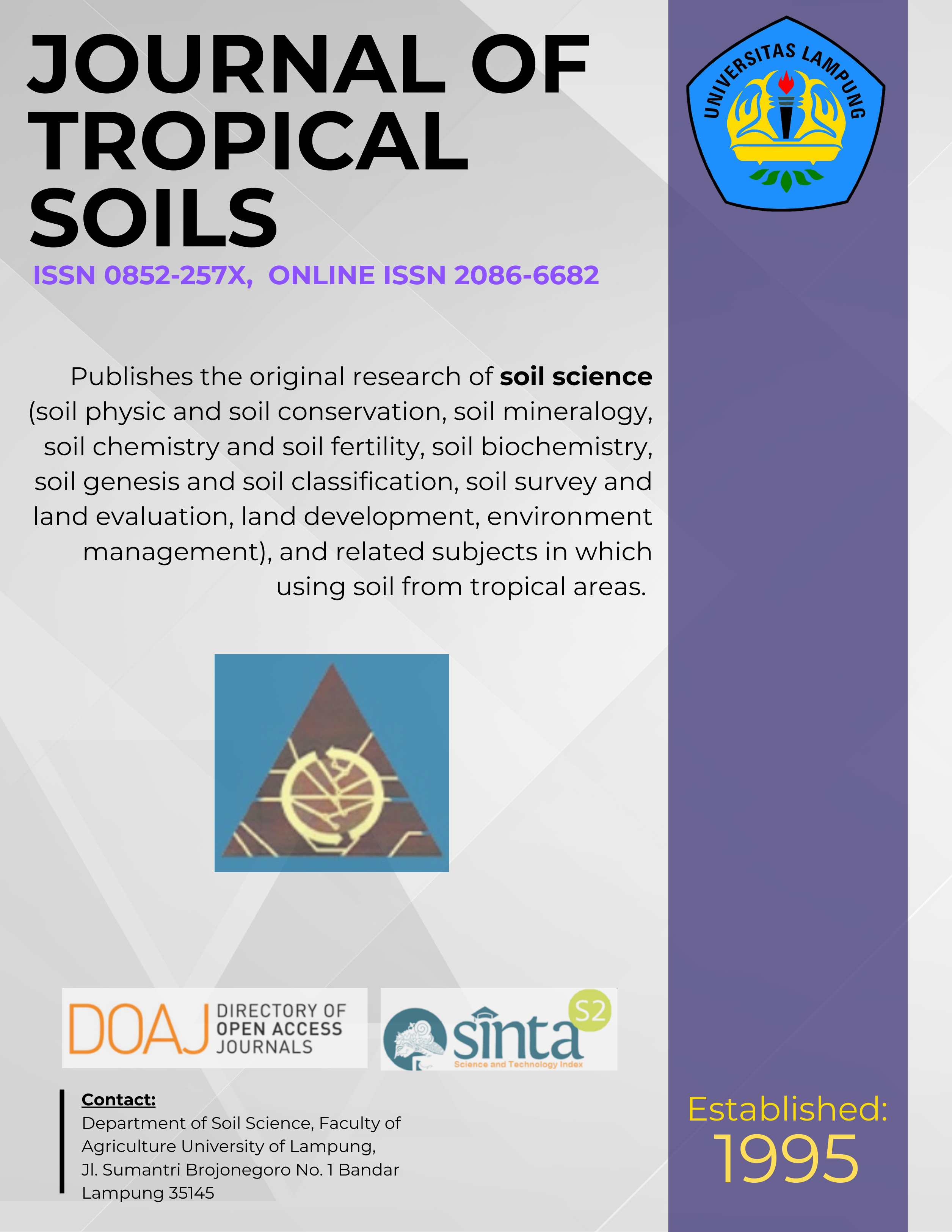Nitrogen Nutrition of Some Local Rice Varieties Grown without Fertilizer on Acid Sulphate Soil Area in South Kalimantan
Main Article Content
Abstract
Banjarese farmers in South Kalimantan apply a very minimum nitrogen (N) fertilizer in growing local rice. This practice has been adopted for many years. Yet, the grain yield level at farmers’ field is not necessary low. We are questioning about N sources for the crop. This study only focuses on measuring net N mineralization in association with N uptake. We grew three rice varieties at four sites in rice growing area of South Kalimantan. The net N accumulation in soil and water, plant top biomass, N concentration of plant tissue and N uptake were measured on monthly basis. The results showed that all rice varieties grown in the 4 locations took up more N than from N mineralized from the organic matter. The higher N in the crop indicates that there are other sources of N for the local rice such as N fixed by microorganisms.
Downloads
Download data is not yet available.
Article Details
Section
Articles
License for Authors
Authors who publish with this journal agree to the following terms:
- Authors retain copyright and grant the journal right of first publication with the work simultaneously licensed under a Creative Commons Attribution License that allows others to share the work with an acknowledgement of the work's authorship and initial publication in this journal.
- Authors are able to enter into separate, additional contractual arrangements for the non-exclusive distribution of the journal's published version of the work (e.g., post it to an institutional repository or publish it in a book), with an acknowledgement of its initial publication in this journal.
- Authors are permitted and encouraged to post their work online (e.g., in institutional repositories or on their website) prior to and during the submission process, as it can lead to productive exchanges, as well as earlier and greater citation of published work (See The Effect of Open Access).
License for Regular Users
Other regular users who want to cite, distribute, remix, tweak, and build upon author’s works, even for commercial purposes, should acknowledge the work’s authorship and initial publication in this journal, licensed under a Creative Commons Attribution License.
How to Cite
Nitrogen Nutrition of Some Local Rice Varieties Grown without Fertilizer on Acid Sulphate Soil Area in South Kalimantan. (2009). JOURNAL OF TROPICAL SOILS, 14(1), 41-47. https://doi.org/10.5400/jts.2009.v14i1.41-47

